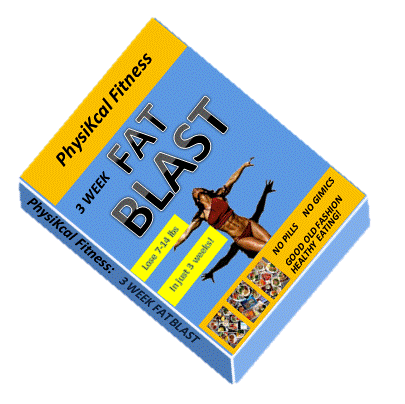
EDUCATION ZONE
Have a question or want to know more about a particular topic. Why not ask a question? We will try do write an article a week based on questions from our audience.
TRAINERS & COACHES
Nick Wachter
Personal Trainer & Conditioning Coach
PhysiKcal Fitness, March, 2015
WAS THE NEWPORT HALF ACCURATE
At the time the organizers have no reason to suspect otherwise. It was measured officially and route planners agreed. The lead bikes also recorded (using a Garmin 510 gps device and a mobile phone using Strava) 21.1km
However that doesn’t mean it’s impossible that the route wasn’t a little off. But before we look at accuracy of gps and how courses are measured we shall delve into the world of what can make a run fast or slow (besides obviously how well you run on the day)
What makes a running course fast?
If all the following factors were in your favor, then over half a marathon you could easily run 2-4minutes faster. If the factors are all against you, then you would expect to run several minutes slower than your predicted time.
Hills – Hills can make a huge difference, short sharp rises followed by long gradual descents can knock minutes off a half marathon time. Working at a slightly higher intensity up the hills, minimizing loss of speed, then increasing speed over a longer period on the way down can provide many seconds for each hill.
The Newport course had several sharp rises followed by longer gradual down hills. Ran the other way around you would expect the course to be slower
Wind intensity changes – If the wind picked up speed in the second half the race then this would give a huge advantage on a course that went out into the wind and came back with it behind.
The Newport course was very windy and the majority of the head wind was in the first 8kms
Wind direction - As with the hills running directly into a headwind for 6km then running on an oblique angle to the wind for 12kms would be beneficial, meaning a larger proportion of time was spent with the wind behind pushing the runners forward. This isn’t a huge difference but again over 2 hours a few tens of seconds. This will change from race tor ace so is dependent upon the day
Wind obstruction – Courses can have sections that are open (meaning effected by the elements, wind, rain, heat etc) and sections that are sheltered from them. If the majority of the course where there is a head wind, is in sheltered areas then the headwind has much less impact on slowing the athlete down. This will change from race to race, so is dependent upon the day.
Shortest route - The problem with the shortest route only usually effects packs of running. Being forced to run around the outside of a corner can add many, many meters on to that corner. The result between shortest and longest possible route on the course can easily be half a kilometer depending on the amount of straight and bends on any given route.
This should not have been an issue in the Newport run as the course was narrow and the longest and shortest routes would have been very similar.
Bottle necks – In busier races this is more of an issue. Having to slow down while runners funnel from a wider section to a narrower. This often results on single track paths in running behind someone where as you would normally run that 1km section 10 seconds faster for example. You can look at your splits on your gps data and from that can work out if you did slow down for other runners
The Newport course did not have too many bottle necks, although some certainly did report it.
Group Running – The crowd can make a run faster or slower. This isn’t dependent upon event but more on certain individuals and their positions with in other groups of runners
Measuring the race
How does a race get measured?
CERTIFIED: As with all half marathons the Newport race should have been 21.1km. This is officially measured by a professional, since 2008 the Jones counter has been the official way to measure courses. This is a device that fits the bikes front wheel and counts accurately the distance the tyres have travelled. Boy are there a lot of rules when getting certified. Ensuring the tyres are pumped up correctly and also a 5mmin warm up so the tire temperatures are consistent. When calibrating a thermometer is used along with a steel tape measure to account for the differences in the length of the tape measure relevant to its temperature.
NON CERTIFIED: Smaller races (the majority) which are not certified will follow a similar but inherently less accurate method for measurements the course.
This can be done using many of the “route planner” app such as Strava, Garmin, map my run, good running guide et al these routes would also then be cycled several times before to ensure they’re accurate.
How accurate and reliable are GPS units? Not very!
Gps units commonly fail completely, fail to find satellites in the first place or miss out whole sections of rides. That’s before you have to worry about the battery life. Reliability can definitely be an issue. If you use Strava there is a website where you can correct rides or runs which are slightly off
http://strava-tools.raceshape.com/snap/
EXAMPLE 1
Driving 40 minutes to record a ride up one of the big hills in the area (used in the tour of Britain) both my phone gps and my Garmin failed completely, meaning my fastest climb could only be verified by timing on the sports camera attached to the bike. Pretty disappointing
EXAMPLE 2
During a 15 hour climbing challenge (tumbleup4life) a friend using the more expensive Garmin 810 had the top half of the climb missed out for the first 7 climbs (7 hours) and yet was perfect for the next 8. Even though he had climbed the mountain 2 more times than myself (28 kms and 1024m extra vertical meters) and his gps recorded him way behind myself.
EXAMPLE 3
Running my first ever marathon (not as part of an event) I completed 43.3kms, a full 1.1km further than the distance required. The reason I ran further? Simple, never trust a gps! On completing the 43.3km my heart sank when the uploaded version corrected it to just 42.1km (100m short of a full marathon). I checked my garmin, 43.4km and also checked another app running alongside strava (edmondo) 43.3km. It was a frustrating drive home, then straight on the pc to “map the route” on several sites to discover it was 43.3km Phew, first marathon completed.
EXAMPLE 4 The Garmin 510 (v popular amongst cyclists) can be accurate to within 0.5% for distance but up to 300% out for elevation on the same 120km ride. When cycling I often take my phone and the Garmin 510.
HOW DO YOU MEASURE GPS ACCURATLY
These examples could go on all day literally. So the question is who’s gps is right? Or should you just average them? If you have enough Gps data for a route then you can certainly plot them together and the resultant graph will be a bell graph… A few outlying data values at the lower and higher end with more and more data points agreeing in the middle. In statistics the “standard deviation” is the amount that the values deviate from the average. With enough data points it should be fairly easy to find an accurate distance.
Assuming there isn’t a reason why all Gps units would be inaccurate… Like tall buildings, forests etc.
The reality is while Gps units may be accurate most of the time, you wouldn’t want to bet too much on it, and you would certainly want to check the distance via another method (route plan etc)
















